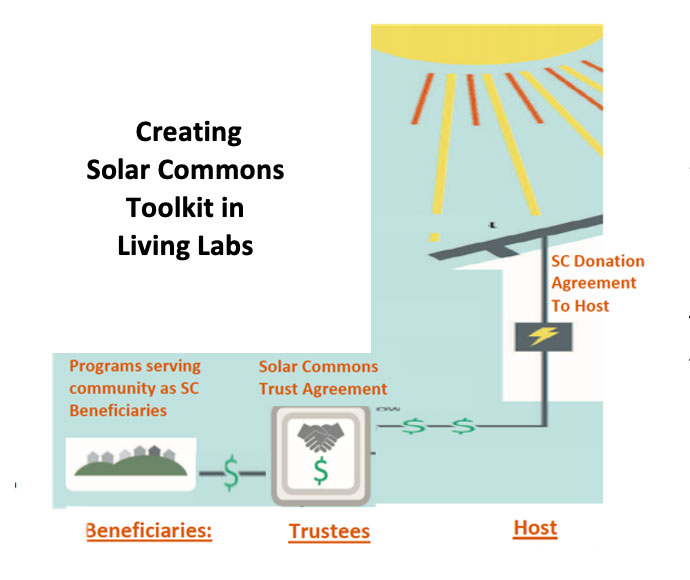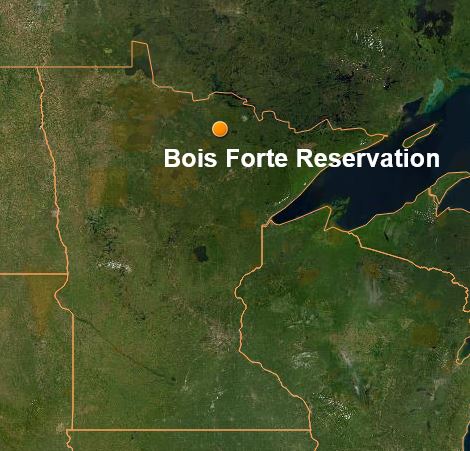Living labs are the communities that work with the Solar Commons Project to co-develop the research and test the prototypes of the Solar Commons Toolkit. Each application of the Solar Commons Model in a community further develops understanding of how the ancient forms of trust and commons can be applied today. The two living labs below demonstrate how Solar Commons serve urban and rural, hot and cold climate communities.
Supported by the Toolkit, each Living Lab identifies a “Host” entity where solar panels are located. The solar panels produce electricity and an associated economic benefit. The Host enters a Solar Commons Donation Agreement which obligates the economic benefits in solar savings to be sent to the local Solar Commons Community Trust. These “social trust” funds are peer governed by community trustees and beneficiaries who use the Toolkit’s legal templates, agreement processes and digital dashboards to transparently and effectively support their community empowerment work.


Solar Commons 1.0: Tucson, Arizona
The first US Solar Commons is a small (14.5kW) solar array, hosted by the Dunbar Pavillon, and bringing about $3,000 a year for twenty years to its community trust fund. SC1.0 mitigates climate change by reducing Co2 emissions by 237 metric tons over its lifetime. SC1.0’s low-income community beneficiary is in Tucson’s Garden District neighborhood which serves a significant portion of the city’s African American, Hispanic/Latino and refugee residents. A Solar Commons mural on a central Garden District meeting place, the schoolyard of Wright Elementary School, tells the story of solar energy embedded in other gathering and sharing practices showing reciprocity and obligation among humans and their sources of life. The mural stands as the community’s “deed of equitable title” to the sun’s common wealth. (See the Rocky Mountain Institute’s analysis of the Dunbar-hosted SC1.0 on p. 9 of its SC Financial Report).

Solar Commons 2.0: Minnesota
In 2020, Solar Commons Project researchers began forming community partnerships to build the second US Solar Commons. In this endeavor our aim is to build a 500kW array that would be hosted by our partner, solar manufacturing firm, Heliene, Inc located in a rural, northern region of Minnesota. This Solar Commons would reduce Co2 emissions by 6,500 metric tons and create around $70,000 a year for its social trust fund which would go to support the work of the Bois Forte Food Sovereignty Group (BFFSG). BFFSG is building a local, healthy food system for the Bois Forte Band of Chippewa tribal community. Solar Commons Project researchers are currently seeking funders for this “living lab” which would be the test site for the Solar Commons Toolkit digital dashboard, local governance and trust protector standards work.
Future Living Labs
Solar Commons Research Project is also in conversation with community partners in North Minneapolis and in SE rural Minnesota.


